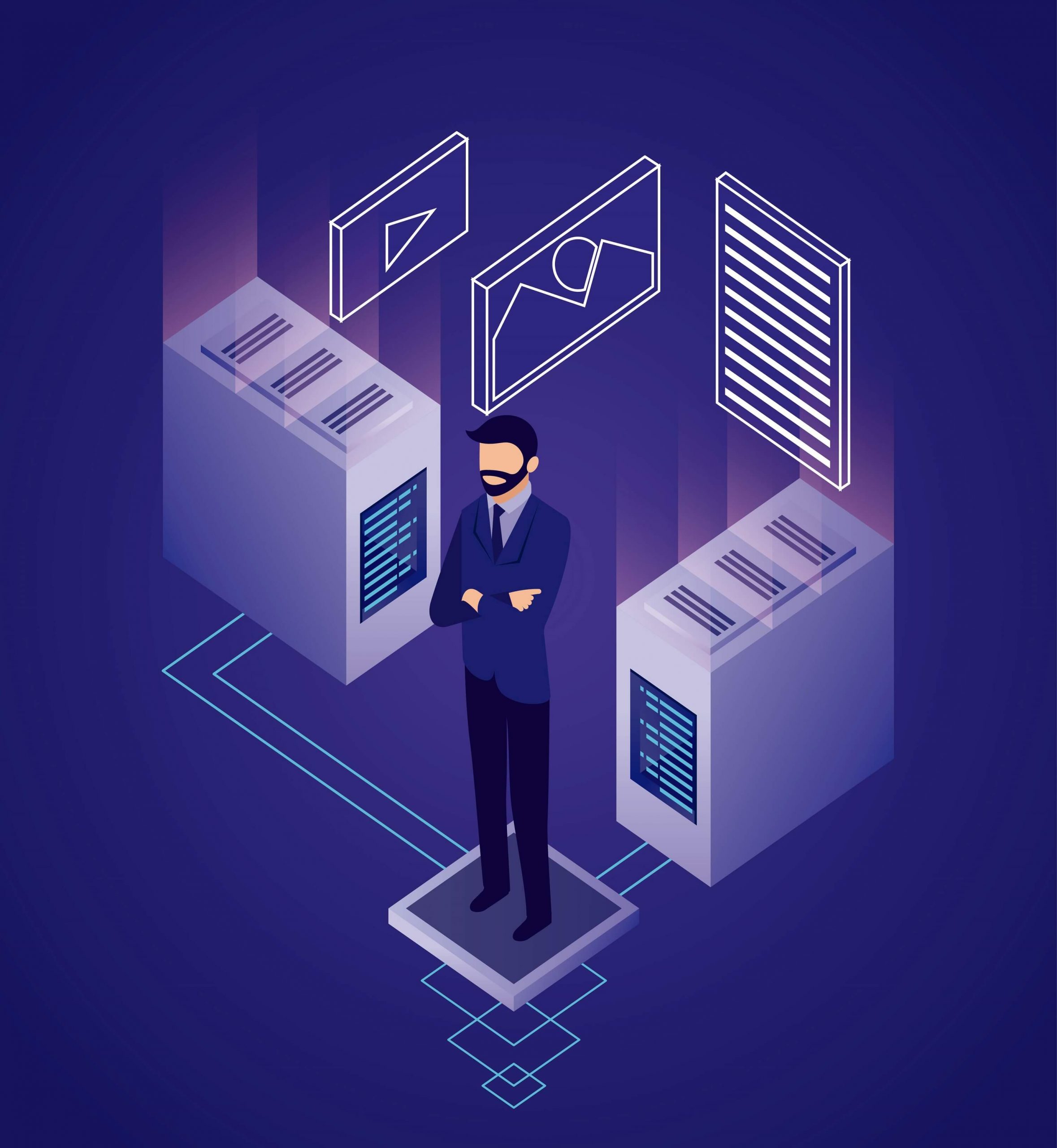Data Center Physical Security Market size and Key Trends in terms of volume and value 2023-2033

Page Contents
Market Overview
Published Via 11Press : Data centers are essential infrastructure facilities. Physical security measures should be put in place in these centers in order to prevent unauthorized access, theft, damage or disruption to operations and ensure optimal efficiency of operations.
The Data Center Physical Security Market size is expected to reach USD 9.6 Bn by 2033, up from its current value of USD 1.4 Bn in 2022, growing at an annual compound growth rate (CAGR) of 19.34% from 2023-2033.
Data centers employ multiple levels of access control in order to restrict entry by only authorized personnel. This could involve electronic access badges, biometric authentication systems, CCTV cameras and security personnel as means of entry control.
Perimeter Security: Data centers employ physical barriers like fences, walls, and gates to restrict unauthorised entry to their physical premise. Additional layers of defenses like sensors, alarms, and cameras may further protect this vital space.
Environmental Controls: at Data Centers To maintain optimal temperature, humidity, and air quality conditions for their IT equipment, data centers utilize stringent environmental controls in the form of HVAC systems, precipitation detection sensors and fire suppression systems.
Data centers typically utilize sophisticated monitoring and surveillance systems in order to detect security violations and prevent intrusions, including intrusion detection systems, motion sensors, and CCTV cameras.
Personnel Security: Employees in data center environments undergo thorough background checks and training programs designed to certify them as reliable professionals who are knowledgeable of security protocols. In addition, only authorized personnel may enter sensitive areas.
Business continuity and disaster recovery: Data centers employ thorough business continuity and disaster recovery plans in case of natural disaster, power outage or another disruptive incident that might threaten operations.
Key Takeaways
- Access control is essential for ensuring only authorized personnel can gain entry to sensitive areas of a data center.
- Perimeter security is vital to preventing unauthorised entry to physical facilities and is an integral component of successful security management.
- Environment conditions must be strictly observed to maintain IT equipment in top shape.
- Monitoring and surveillance systems assist in the detection and prevention of security violations.
- Personnel security measures such as background checks and training sessions are necessary to ensure employees can be trusted.
- Plans for disaster recovery and business continuity are crucial to ensure operations can continue uninterrupted following any disruptive event.
- Physical security alone cannot ensure the protection of a data center; effective cybersecurity measures should also be put in place.
- Physical security should be continually assessed and updated in response to new threats and vulnerabilities that arise, in order to stay abreast of changing threats and vulnerabilities.

Request Sample Copy of Data Center Physical Security Market Report at: https://marketresearch.biz/report/data-center-physical-security-market/request-sample/
Regional Snapshot
- North American data centers generally offer strong physical security standards, with many facilities employing multilayered security measures such as biometric authentication, CCTV cameras and armed security officers to safeguard data center operations. Unfortunately, natural disasters such as hurricanes, earthquakes, wildfires pose a considerable threat to data center operations in this region.
- Europe also places great emphasis on physical security for their data centers, with many facilities implementing strict access controls and surveillance systems. Furthermore, European Union's General Data Protection Regulation has inspired many data centers to prioritize personal data protection and privacy.
- Asia-Pacific: Data center operators across Asia-Pacific are experiencing explosive growth in their data center market and placing more emphasis on security than ever. Government regulations mandate implementation of specific security measures like biometric authentication and CCTV cameras into data centers across some nations.
- Some data centers in Latin America employ advanced physical security measures while others utilize less comprehensive measures; nonetheless, given the region's susceptibility to natural disasters like earthquakes and hurricanes, robust disaster recovery and business continuity strategies must be in place within data centers for business continuity purposes.
- Middle East and Africa: Data centers across these regions are increasingly employing physical security measures such as access controls and surveillance systems to protect themselves against political unrest and social unrest, but in certain countries this poses security hazards that should not be overlooked.
Any inquiry, Speak to our expert at: https://marketresearch.biz/report/data-center-physical-security-market/#inquiry
Drivers
- Cyber threats such as hacking, malware and ransomware have become more sophisticated, making data centers prime targets of cybercriminals. Physical security measures can prevent unauthorised access to IT infrastructure and sensitive data.
- Numerous industries and governments impose specific physical security regulations that mandate that data centers implement specific physical security measures to safeguard sensitive information. Healthcare organizations must abide by HIPAA regulations while financial institutions must abide by PCI DSS rules.
- Data centers are experiencing exponential data storage growth, and it is expected to continue. With increasing value comes greater concern over loss, corruption or disruption of this valuable information.
- Data centers are vital facilities that must operate without interruption to ensure business continuity. Strong physical security measures can help avoid disruption caused by natural disasters, power outages and other emergencies that might interrupt their daily operations.
- An infiltration into a data center operator's security can damage their reputation and undermine customer and stakeholder trust, so implementing robust physical security measures to safeguard sensitive data and maintain operations integrity is vital for their reputation and survival.
Restraints
- Implementing comprehensive physical security measures can be costly, especially for smaller data centers. Biometric authentication systems and sophisticated surveillance systems are examples of expensive high-end security technologies.
- Data center operators must balance the need for physical security with the need for space to accommodate IT infrastructure due to space constraints. Adding physical security measures such as barriers, fences, and checkpoints can consume valuable space.
- Authorized personnel who need to perform maintenance, upgrades, or restorations must have easy access to data centers. The implementation of stringent physical security measures, such as biometric authentication systems or multiple security checkpoints, can impede authorized personnel's access.
- Compliance requirements and regulations can restrict the physical security measures that data center operators can implement. Some countries, for instance, have stringent regulations regarding the use of biometric authentication systems, which can restrict their adoption in data centers.
- In order to function correctly, physical security measures require ongoing maintenance and upkeep. This can be a significant burden for operators of data centers who must reconcile security with other operational priorities.
Opportunities
- Emerging Technologies: Innovations such as artificial intelligence, machine learning and the Internet of Things (IoT) can be leveraged to strengthen physical security. For instance, surveillance systems equipped with facial recognition or behavioral analysis technology can assist in detecting and preventing security violations.
- Partnerships: Data center administrators can form alliances with security firms and technology suppliers to implement advanced physical security measures. Such partnerships provide access to sophisticated technologies and specialized knowledge not available internally.
- Industry Standards: Industry standards such as ISO/IEC 27001 and SOC 2 offer data center operators's guidelines and best practices for protecting customers and other stakeholders' data centers. By adhering to such regulations, data centers can demonstrate their dedication to security while earning customers' and stakeholders' trust.
- Training and education: Training employees on security best practices is one way of increasing physical security as a whole. This may involve teaching employees how to detect and respond to security threats as well as how best to use security technologies such as surveillance systems and access control systems effectively.
Challenges
- Complex threat landscape Data centers confront a complex threat landscape, with cybercriminals employing sophisticated methods to breach security. Social engineering, deception, and other methods may be used by attackers to gain access to data center facilities and systems.
- Multiple entry points: The physical security of a data center is compromised by the facility's multiple entrance points, including doors, windows, and ventilation systems. This makes it challenging to secure every conceivable entryway, particularly in large facilities.
- Employees may inadvertently compromise physical security by leaving doors unlocked or not securing equipment properly due to human error.
- Technology limitations: System malfunctions, power outages, and network downtime can compromise physical security measures, rendering them ineffective.
- Insider threats are an additional challenge to physical security, as employees or contractors with access to sensitive areas or data may knowingly or unwittingly breach security.
- Compliance with regulations Data centers are required to adhere to a variety of regulatory requirements and standards that specify the security measures that must be implemented. Compliance can be difficult and resource-intensive to achieve.
- Physical security measures can be expensive, particularly for smaller data centers with limited budgets.
Market Segmentation
solution
- ideo surveillance
- access control solutions
- and monitoring solutions.
service
- security consulting services
- professional services
- system integration services.
industry vertical
- IT and telecom
- BFSI
- healthcare
- Government
- Energy
Key Players
- Allegiant
- Axon Soft
- Advanced Perimeter Security
- Assa Abloy
- Arecont Vision
- Axis Communication
- Avigilon
- By remote
- Boon Edam
- DvTel
- Digitus-Biometrics
- Exacq Technologies
- Easy Clocking
- EMKA
- Hikvision Digital
- FutureNet Security Solutions
- Integrated Biometrics
- Hurricane Fence Company
- March networks
- Jackson
Report Scope
| Report Attribute | Details |
| Market size value in 2022 | USD 1.4 Bn |
| Revenue forecast by 2033 | USD 9.6 Bn |
| Growth Rate | CAGR Of 19.34% |
| Regions Covered | North America, Europe, Asia Pacific, Latin America, and Middle East & Africa, and Rest of the World |
| Historical Years | 2017-2022 |
| Base Year | 2022 |
| Estimated Year | 2023 |
| Short-Term Projection Year | 2028 |
| Long-Term Projected Year | 2033 |
Request Customization Of The Report: https://marketresearch.biz/report/data-center-physical-security-market/#request-for-customization
Recent Developments
In 2020, the SolarWinds breach illustrated the susceptibility of data centers to cyber attacks. Multiple US government agencies and other organizations' systems were compromised by hackers who obtained access to SolarWinds' Orion software.
Department of Financial Services of New York In 2017, the New York State Department of Financial Services issued a cybersecurity regulation mandating the implementation of a comprehensive cybersecurity program by financial institutions. This includes physical security measures like access controls and monitoring of physical access to data centers.
GDPR (2018): The General Data Protection Regulation (GDPR) went into effect in the European Union in 2018, mandating that organizations secure the personal data of EU citizens. This includes instituting physical security measures to prevent unauthorized access to data centers that store personally identifiable information.
COVID-19 Pandemic (2020-Present): The COVID-19 pandemic has increased remote employment, making it more difficult to implement physical security measures. This new reality has required data centers to implement new remote access controls and monitoring systems.
Biometric Authentication (Recent Years): As a physical security measure, biometric authentication is increasingly utilized in data centers. This includes fingerprint and facial recognition systems, which can increase security and access control.
Key Questions
What is physical data center security?
Data center physical security refers to the measures taken to safeguard data center facilities and the sensitive data stored within them from physical threats, such as unauthorized access, theft, disruption, or damage.
What are some examples of physical security measures implemented within data centers?
Access control systems, surveillance systems, intrusion detection systems, fire suppression systems, environmental controls, secondary power supplies, and other physical security measures may be implemented in data centers.
Why is physical security for data centers so important?
Physical security is crucial for data centers because they contain vital infrastructure and sensitive information. A breach in physical security can result in the theft or destruction of equipment, the loss of data, or the interruption of operations, all of which can have devastating effects on enterprises or organizations.
How difficult is it to implement physical security in data centers?
Complex threat landscapes, multiple entry points, human error, technological limitations, internal threats, regulatory compliance, and cost are some of the obstacles associated with implementing physical security in data centers.
What are some recent advancements in the physical security of data centers?
Recent advancements in data center physical security include the SolarWinds breach, the New York State Department of Financial Services Cybersecurity Regulation, the General Data Protection Regulation, the COVID-19 pandemic, and the increasing use of biometric authentication.
Contact us
Contact Person: Mr. Lawrence John
Marketresearch.Biz (Powered By Prudour Pvt. Ltd.)
Tel: +1 (347) 796-4335
Send Email: [email protected]
Content has been published via 11press. for more details please contact at [email protected]
The team behind market.us, marketresearch.biz, market.biz and more. Our purpose is to keep our customers ahead of the game with regard to the markets. They may fluctuate up or down, but we will help you to stay ahead of the curve in these market fluctuations. Our consistent growth and ability to deliver in-depth analyses and market insight has engaged genuine market players. They have faith in us to offer the data and information they require to make balanced and decisive marketing decisions.



